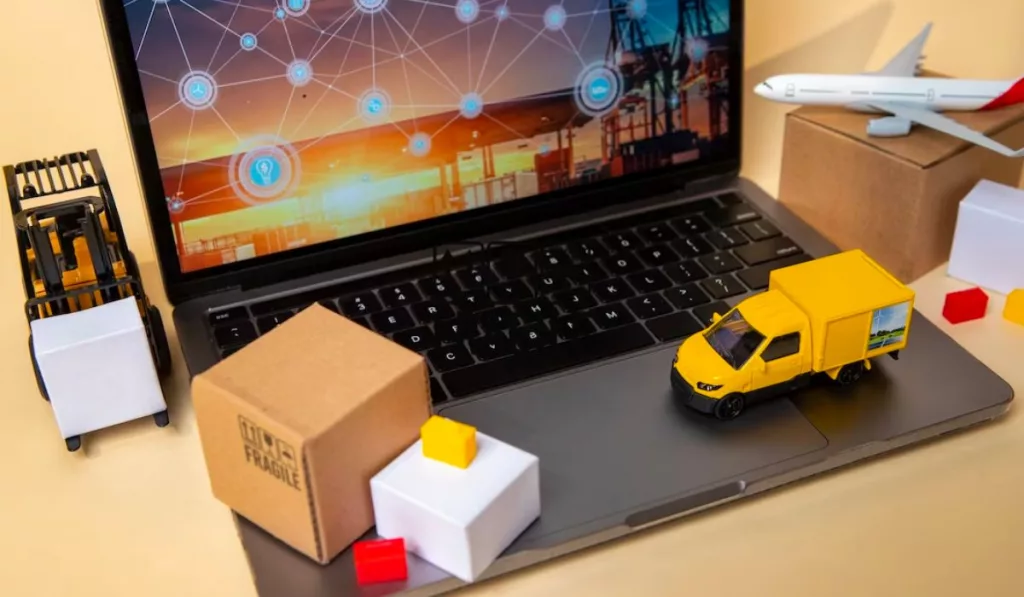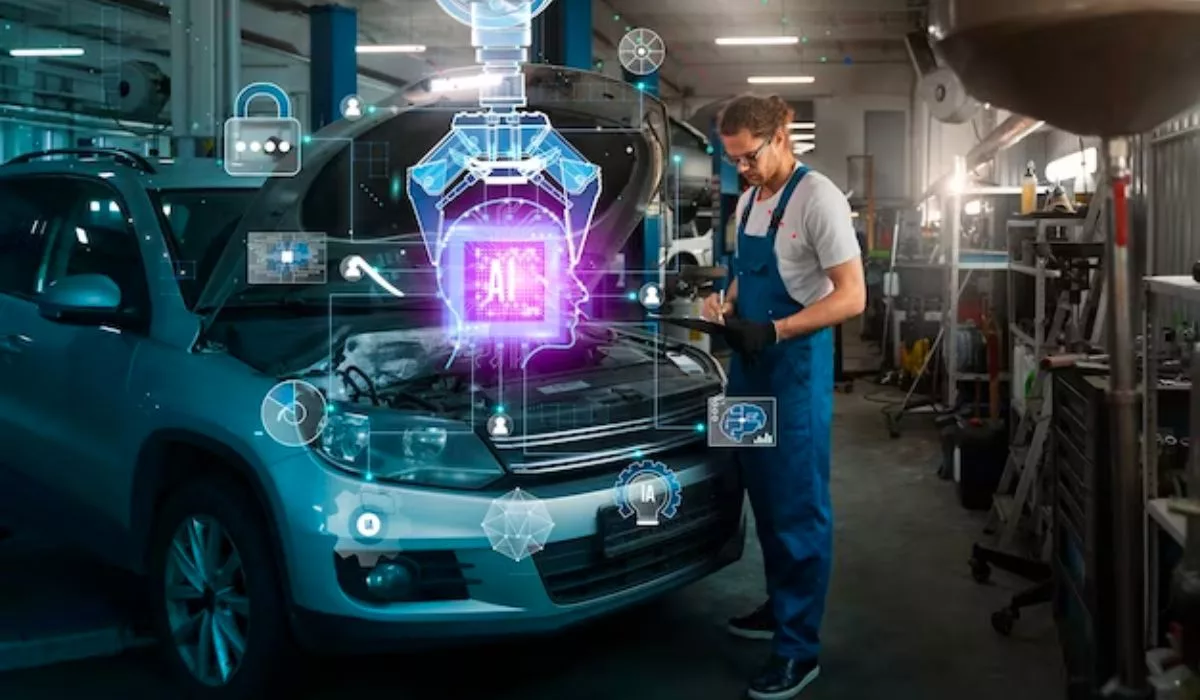Do you run an online retail or e-commerce store? If you do, you understand the pain of getting goods to customers on time.
While your customers care only about their product, you must look at other aspects to ensure a seamless customer experience. This includes fleet management.
But with so much already on your plate, you might not have the time to manage every commercial vehicle, van, or truck manually.

That’s why e-commerce companies rely on fleet technologies to ensure timely delivery of goods and products.
But how does this fleet technology help?
With 86% of fleet operators experiencing a solid return on investment by connecting fleet technology, embracing this technology revolution can change the e-commerce logistics game.
Also, if you are an aspiring entrepreneur and want to build something exceptional in ecommerce then please check out our list of Top Shopify App Development Companies.
So, let’s look at the eight technologies used in fleet management and see how they benefit e-commerce logistics.
Benefits of Using Fleet Technology
Embracing various fleet technologies will keep e-commerce companies at the forefront. Here are some benefits:
- Enhances productivity and efficiency: These digital technologies automate different routine tasks, cutting the time spent on each job. This frequently leads to higher productivity for drivers.
- Increases safety and security: Many technologies offer safety features like dashcams and vehicle alerts for identifying driver-related risk patterns and vehicle performance.
- Decreases cost: When e-commerce logistics embrace digital transformation, they reduce the cost associated with inefficient resource allocations. Additionally, some of these software optimizes routes, minimizing fuel efficiency thereby reducing transportation costs.
- Imparts agility to the workflow: With fleet technologies, it becomes easier for e-commerce logistics to react to changing market demands. These technologies provide real-time updates and insights, enabling e-commerce companies to respond quickly to challenges and capitalize on upcoming technologies.
- Provides insights into business data: Technologies like GPS (global positioning system) or telematics give accurate location data, helping e-commerce companies optimize routes and allocate resources while ensuring zero wastage. With this data, e-commerce companies get an in-depth understanding of their operations, leading to strategic planning and improved decision-making in e-commerce.
8 Fleet Technologies to Consider in 2025
Here’s a list of fleet technologies you can consider using in 2025:
1. Battery management software
One of the biggest reasons fleet technology is revolutionizing is the widespread use of sustainable and electric vehicles, or EVs. E-commerce companies are using EVs as their last-mile delivery fleets.
That’s where advanced battery software comes into the picture. This software optimizes the performance of EVs and other battery vehicles by monitoring battery health and managing charging cycles. Using robust battery software helps e-commerce logistics ensure each vehicle in the fleet operates at its full potential.
When e-commerce logistics use sophisticated battery management software, they extend the battery’s lifespan and reduce charging downtime while introducing sustainability in the operations.
As most of these management systems offer cloud functionality, monitoring the battery’s health in real time becomes easier.
2. Parts inventory management software
Another technological transformation in e-commerce logistics is due to parts inventory management software. Parts inventory management tracks and manages the inventory of parts and components used in the fleet technology.
It provides
- Real-time visibility into spare parts’ availability, status, and usage.
- Issue parts when the fleet breakdown occurs.
- Reorder parts when necessary.
- Organize the inventory parts.
This software helps e-commerce companies not only track vehicle movements but also gives an update on the real time status of essential spare parts. As a result, online stores are better at meeting customer demands more quickly and efficiently.

When the right spare parts are available on time, it maintains the operational readiness of the e-commerce delivery fleet. By minimizing vehicle downtime, companies meet delivery timelines, which increases customer satisfaction.
Additionally, by using inventory management software, e-commerce companies reduce the risk of unexpected breakdowns. Businesses can reduce vehicle downtime by following parts inventory management best practices, such as predictive maintenance, real-time vehicle tracking, and automated reordering.
As the e-commerce industry values timely delivery, using these best practices results in fewer operational disruptions and highly reliable logistics operations.
3. Automotive e-commerce platform
Growing technology and rapid adoption of artificial intelligence (AI) are slowly changing the face of automobile shopping. There has been a drastic shift in buying and selling cars. Customers want an alternative to traditional dealerships – giving rise to automotive e-commerce solutions.
Automotive e-commerce refers to buying and selling vehicles and related accessories online.
Businesses using an automotive e-commerce solution enhance their logistics by providing a specialized online marketplace for different automotive parts and accessories.
These marketplaces offer a wide range of products, which streamlines the procurement process, helping in faster maintenance of fleets.
Many of these automotive e-commerce platforms integrate with fleet management and logistics software. With real-time data exchange between the software, e-commerce companies can optimize or rework their routes based on the availability of parts.
4. Augmented reality (AR)
Augmented reality is another next-generation technology that will change the face of fleet management. With the aid of AR, e-commerce companies handle everything from assisting in loading the fleet to maintaining vehicles.
Maintenance staff look at a part and see all its information through the AR smart glasses. This makes the routine inspection simpler and accelerates the normal maintenance process.

AR further helps e-commerce companies save on training costs. It creates a simulated environment that helps companies train their drivers.
You may also like to check Top E-commerce Website Development Agencies in London.
5. AI dashcams
These vehicle-mounted cameras use AI to extract data from the e-commerce fleet. Dashcams use highly sophisticated and intelligent software that detects various behaviors indicative of distracted driving, such as the use of mobile phones.
This enables e-commerce companies to monitor their fleet drivers and increase fleet safety. The AI dashcam analyzes the recordings of the driver and road users in real time. It instantly picks up issues such as rash driving, eating, or smoking.
Additionally, fleets also have an AI dashcam at the rear. This camera is useful in the event of an accident.
By leveraging advanced AI-powered safety technologies, e-commerce companies prevent 63,000 crashes and 293 deaths yearly.
Driver safety is paramount in fleet management and e-commerce logistics, making AI dashcams and similar technologies a must-have for e-commerce fleets.
6. Telematic systems
The Global Positioning System, or GPS for short, is the most common telematics system. But why is it so popular in fleet management? And why do e-commerce companies rely on it?
According to studies, fleet management systems using GPS increase productivity by 10-15%, enhance vehicle utilization by 15-20%, and save 20-25% of fuel.
Besides GPS, telematic systems offer these features:
- Fuel efficiency: Telematic devices track fuel efficiency by identifying behaviors resulting in fuel wastage. Some reasons for fuel wastage could be excessive idle time or drivers taking longer delivery routes.
- Driver support and behavior analysis: The ability to monitor driver’s behavior makes telematics a fleet technological revolution. This mostly refers to rash driving. E-commerce companies receive real-time alerts when drivers engage in dangerous driving behaviors, allowing them to respond promptly.
- Vehicle performance monitoring: It provides details on engine temperature to sniff out potential mechanical issues. Telematics provides information on rotation per minute (RPM), engine speed, and other parameters to optimize vehicle efficiency.
- Built-in hands-free features for mobile phones.
- Emergency warning systems and wireless safety communications.
7. Route optimization software
Route optimization software helps e-commerce companies plan the most efficient delivery route.
This software considers traffic, weather conditions, customer preferences, and road closures to chalk out a delivery route.
These route optimization tools help drivers reach their destination safely and cost-effectively and ensure timely delivery of goods to customers.

When conditions change, companies can alter their route to ensure the safety of drivers while providing superior customer experience. For instance, a sudden rainy day can prompt delivery vehicles to take the non-slippery roads.
8. Electronic Logging Devices (ELDs)
ELD is an electronic logging device that records the driver’s driving time and maintains the hours of service (HOS) record. It keeps records of miles a driver drives in a day or week.
The purpose of ELD is to prevent driver fatigue and make roads safer. ELD eliminates the hassle and mistakes inherent in manually recording individual transactions. This allows e-commerce companies to maintain their records automatically.
Transform your e-commerce logistics like never before
While all technologies and software mentioned above can single-handedly transform your fleet management. But, you require a perfect balance of these technologies to deliver a superior customer experience and ensure an efficient fleet.
Knowing about the software required to build a fleet tech stack is just one part of the equation. You need to understand your business requirements before you pick two or three software that impact your bottom line.
In a rapidly evolving industry, embracing change and digitalization is not just a choice but a necessity. Whether you’re a small e-commerce business or a large one, step into the world of fleet technology and witness your business soar to new heights.










Leave a Reply